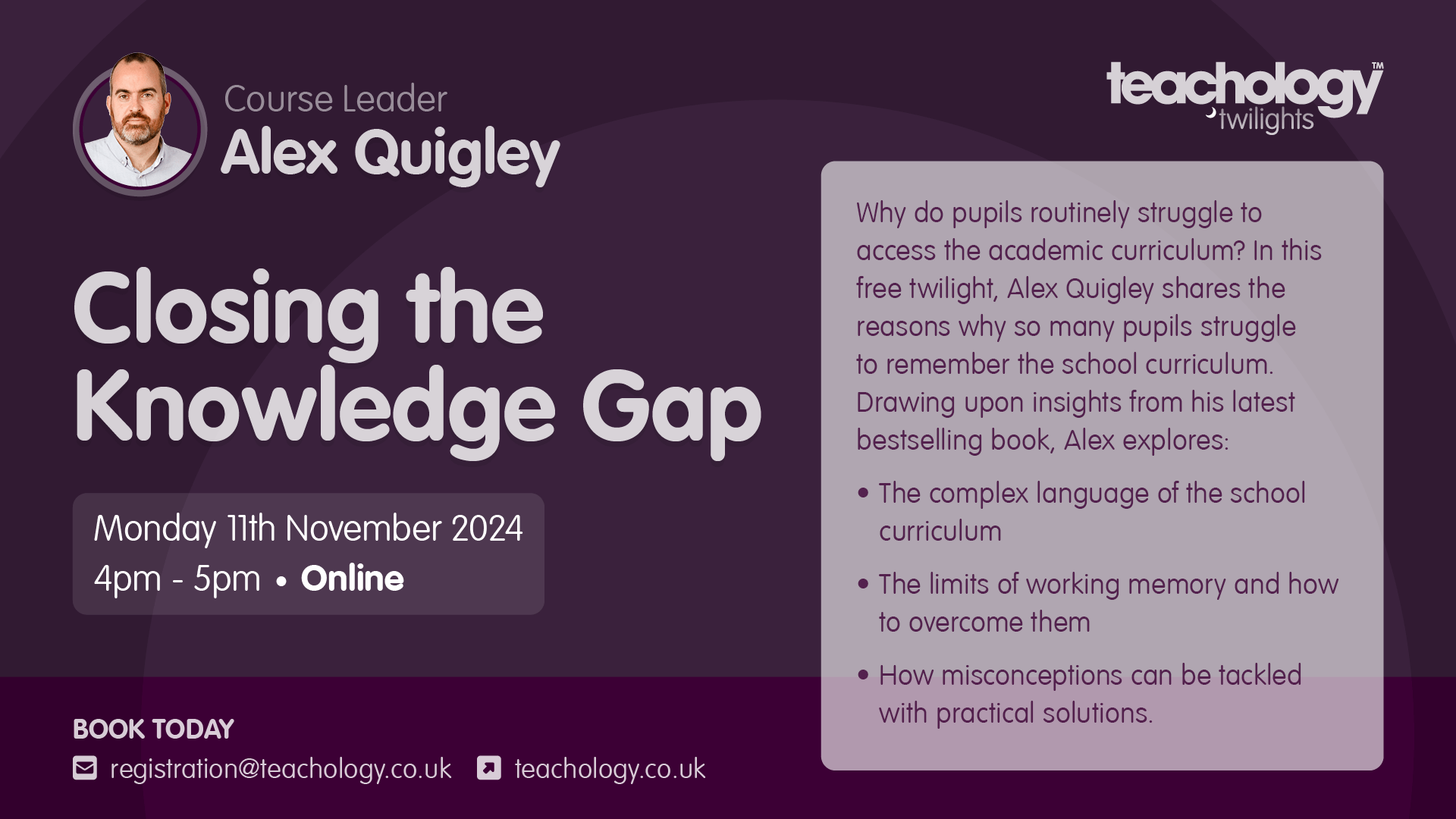Every teacher can be sure of cyclical change. Governments come and go and the national curriculum and assessment shifts along with them. Teacher professional development trends come and go too.
We are left asking: what trends for teacher professional development will emerge?
Whether forms like instructional coaching will last the course, or professional learning communities come back in vogue, we need to ensure that they encompass the complexities of the ‘what', ‘why’ and ‘how’ teaching and learning happens.
Learning from past cycles of change – and sometime improvement – is valuable. In my twenty years involved in education, I think Graham Nuthall best captures the biggest crack in the edifice of teacher professional development and training:
“In most cases, there is a description of what to do and how to do it, but no description of why it might work. There is no explanation of the underlying learning principles on which the method or resources have been constructed. The result is teachers are constantly being encouraged to try out new ideas or methods without understanding how they might be affecting students learning.”
Graham Nutthall, ‘The Hidden Lives of Learners’
For example, it is easy to undertake instructional coaching about a specific teaching action – the how – and not really engage with understanding the why of deploying the strategy. The capacity to intelligently adapt a teaching approach is reliant on an expert understanding of the how, but also a vital grasp of the why.
Of course, teachers are time poor. School leaders understandable create professional development forms that try to maximise a shift in practice, so getting straight to the how is a pragmatic move. If it feels on an attractive poster, all the better. And yet, this pragmatic choice to focus on the how can quickly be compromised without a rich understanding of the why.
Why might this this teaching strategy work be likely to succeed in a given context? Why might it fail? Why might it work in one subject discipline but not another?
Though we often don’t like to admit it in shiny, 'the-next-big-thing' CPD sessions, most new strategies fail, at least at first, and teachers struggle to shift their practice and habits. At least if we understand why a strategy may be effective – such as the ever popular practice of ‘retrieval practice’ – we can better navigate when it goes wrong!
This is not an indirect critique of approaches like instructional coaching, that focus more squarely on the how. You can easily get wrapped up in exploring theory that doesn’t change anything. Merely musing over the why of teaching and learning is no better than singularly focusing on a flimsy formula for teaching practices.
There needs to be a judicious balance of why, what, and how in teacher professional development approaches. If we get the balance right, then we may make teaching more ‘intellectually attractive’, help improve teachers and better retain them in the profession too.
A worked example: working memory
Professor Dan Willingham suggests we should have a ‘mental model of the learner’ to help train new teachers. Principles from cognitive psychology, like better understanding memory, can offer some of the why that informs how and what we teach.
I am convinced that understanding the limits of working memory is one of the most useful theories for teachers to understand. If pupils’ learning is always compromised by their ability to remember only small chunks of new information, it poses obvious implications for how we teach.
An understanding of working memory can inform curriculum design and sequencing, teacher explanations, modelling, scaffolding, chunking down complex tasks, and more. It can better inform key skills, such as developing pupils as successful writers.
Coaching a teacher how to live model writing on the whiteboard is unlikely to be deployed with consistent successful without a rich mental model of why working memory impacts on pupils’ thinking and their writing.
In Nuthall’s memorable description, “it’s like being told how to drive a car without being given any understanding of how the car and its engine work.” When the proverbial car breaks down, and our teaching attempts fail, teachers are left to fumble around with little clue what to do.
Whatever the trajectory of the next trend for teacher professional development, we need to ensure we balance the why, the what and the how, and not fall for the excitement of the shiny 'next-big-thing' approach.
Related reading:
- One of the big advances in teacher professional development is the EEF guidance report. Its forces on PD 'mechanisms', and a 'balanced approach', is a helpful support to get PD right - READ HERE.
- A related teacher development and training issue is grappling with the endless challenge of curriculum – see ‘Curriculum development is teacher development’ – READ HERE.
This coming Monday - 12th Nov - I am doing a FREE Teachology twilight on 'Closing the Knowledge Gap' - SIGN UP HERE.







Comments